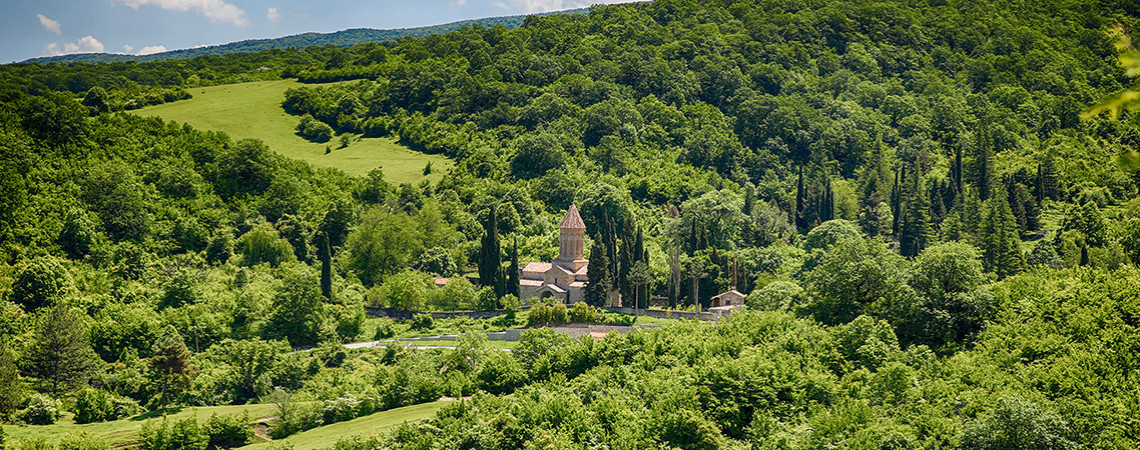The monastic complex of Ikalto is situated 7-8-kilometers west of Telavi on the outskirts the village of Ikalto. The complex was founded by one of the Assyrian monks – Zenon of Ikalto in the late VI century. Only three churches have been preserved from the complex. The transfiguration church–Gvtaeba (Holy Spirit) built in the VIII-IX centuries stands on the site of an earlier church (in which the founder of the monastery, Saint Zenon had been reburied) and had the form of the Greek cross in plan. St. Mary’s single-nave church Kvelatsminda (Absolutely Holy) built at the close of the XII century and at the turn of the XIII century and Sameba (Holy Trinity). In spite of considerable reconstruction, one can still see parts of an older VI century domed church in the little Trinity church. These churches were restored so many times that their original appearance has changed drastically. All three churches, like most of the Kakhetian churches, are white, and against the background of green hills, attracts one’s attention from far away. The remains of the academy and the refectory survive among other ruins of the monastery complex.
According to verbal sources, during the Georgian Renaissance (IX-XIII centuries) an outstanding historical figure and tutor of David the Builder, scholar and philosopher Arsen of Ikalto initiated the project on establishing a high school and the academy in Ikalto. He was a son of Kakhetian nobleman Ibad Vachnadze. Ikalto monastery was known as one of the most significant cultural-scholastic centers of Georgia. That is proved by the ruins of some presumable civil building found in the garth of the monastery. The oblong building of the academy is built of cobble stone. The ground floor consisted of two rooms, while the single hall of the first floor was meant for scholarly discussions. Scholarly and literary work was in full swing at the academy.
Many important works were written and translated from Greek, important catalogues were made up. During his scholarly activity at academy, Arsen of Ikalto, the founder and the first rector of the academy, translated such an important work as “The Great Nomocanon”, another important work translated by him was “The Source of knowledge” written by John Damascene. Arsen of Ikalto wrote “The Epitaph of David the Builder”, which was passed on from generation to generation. The academy of Ikalto had functioned for a long time, playing an important role in the history of Georgian enlightenment.
According to a legend the famous XII century Georgian poet Shota Rustaveli studied here.
In Georgian academies, the syllabus consisted of Trivium (grammar, rhetoric, dialectics or logic) and Aquarium (music, arithmetic, geometry and astronomy) cycles. Theology, philosophy and chanting were also taught here. Besides the theoretical courses, the students were skilled in pharmacology, pottery making, metal work, viticulture and wine making.
Archaeological excavations revealed numerous workshops, wine-cellars, a smithy, store rooms and other household rooms grouped around the academy building. The Monastery was roofed with glazed tiles.
In 1616, the Iranian invaders led by Shah Abbas-II set it on fire and the academy ceased to exist.
After the annexation of Georgia by Russia, in 1921, the monastery was closed.
In 1965, a museum was opened in the main church.
Precious books, icons, the church bell and many important items were lost.
After the restoration of freedom, in 1991, the monastery became active once again.
Several renovations took place from 2007 to 2009.



